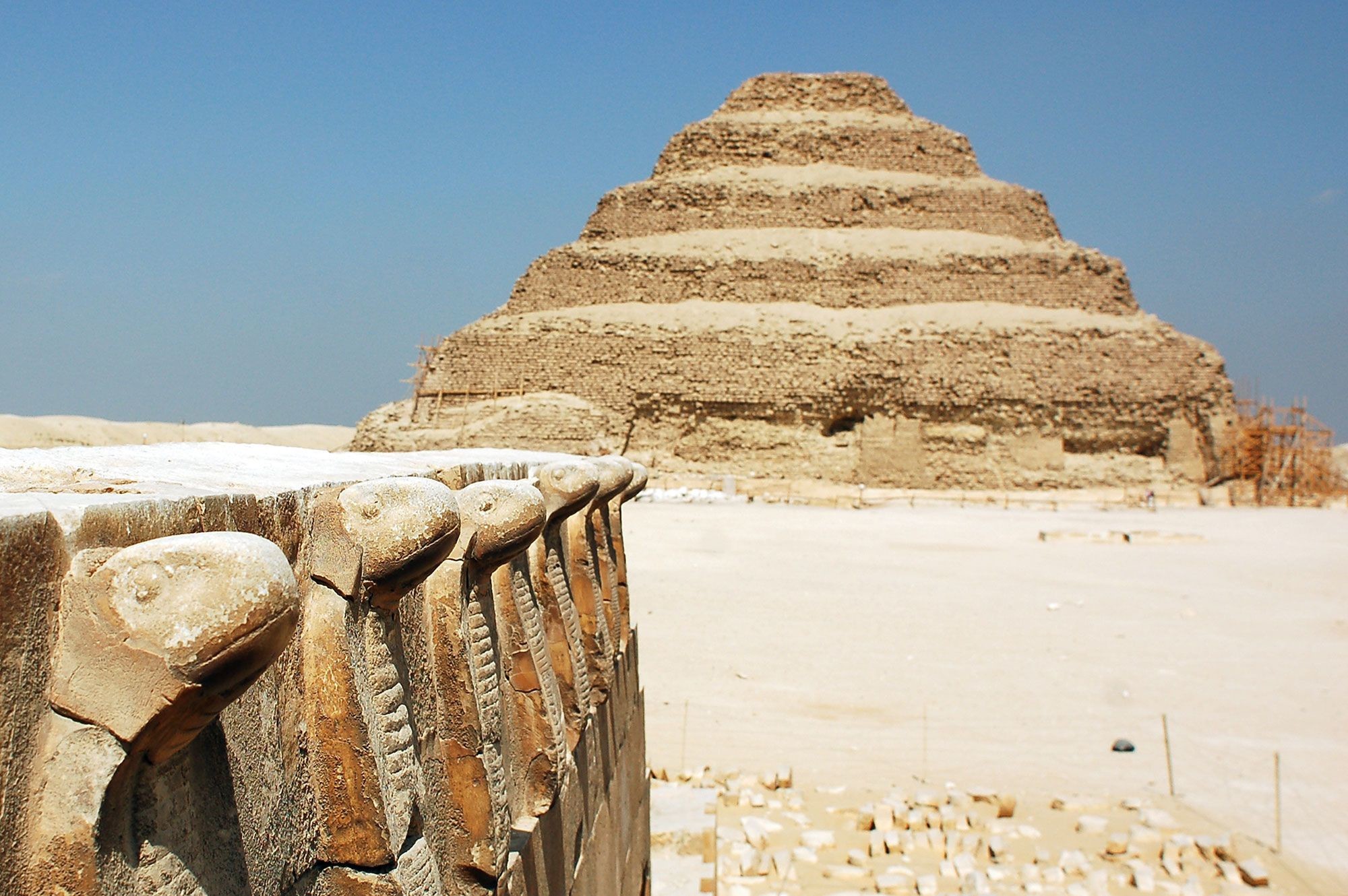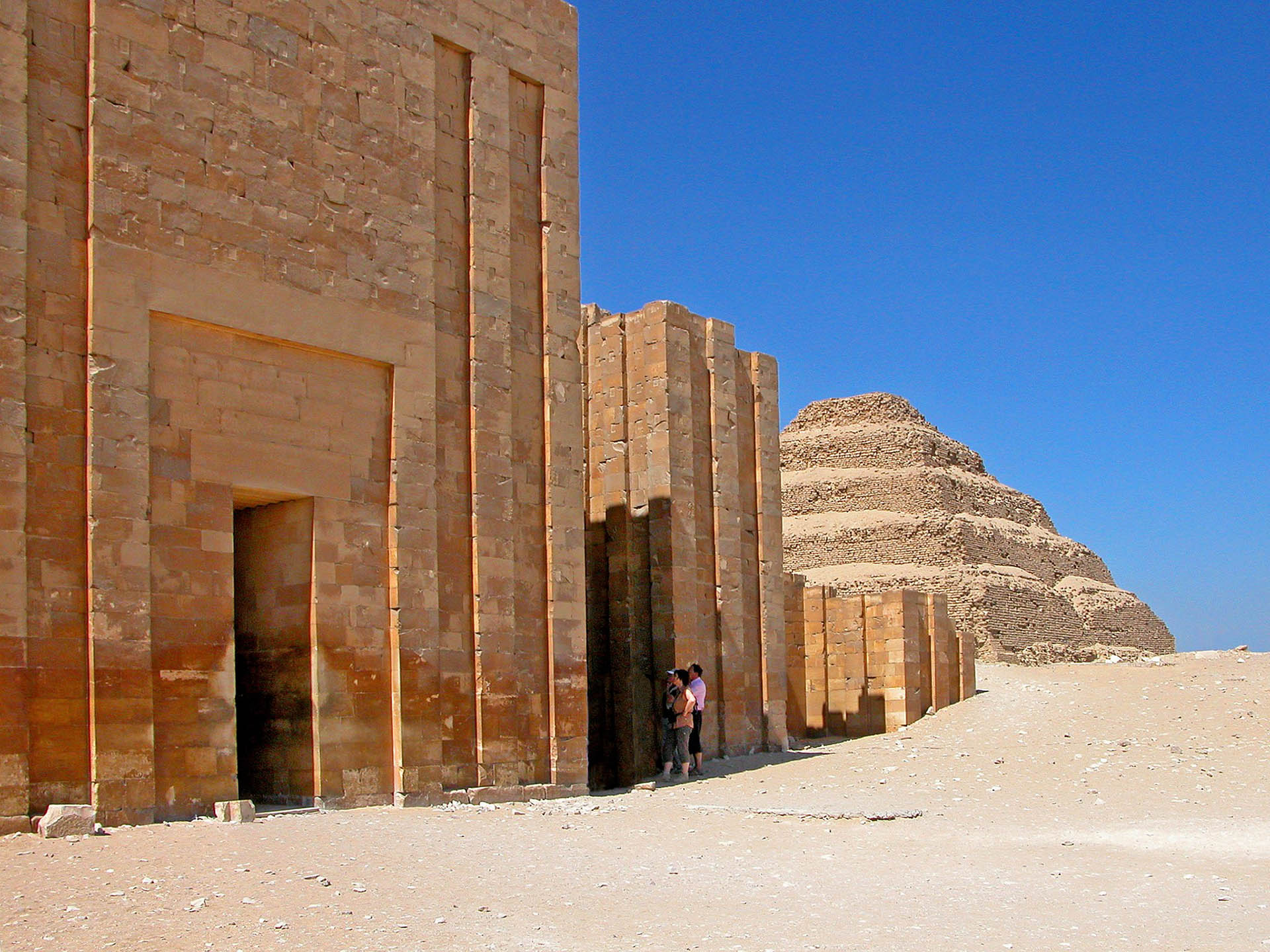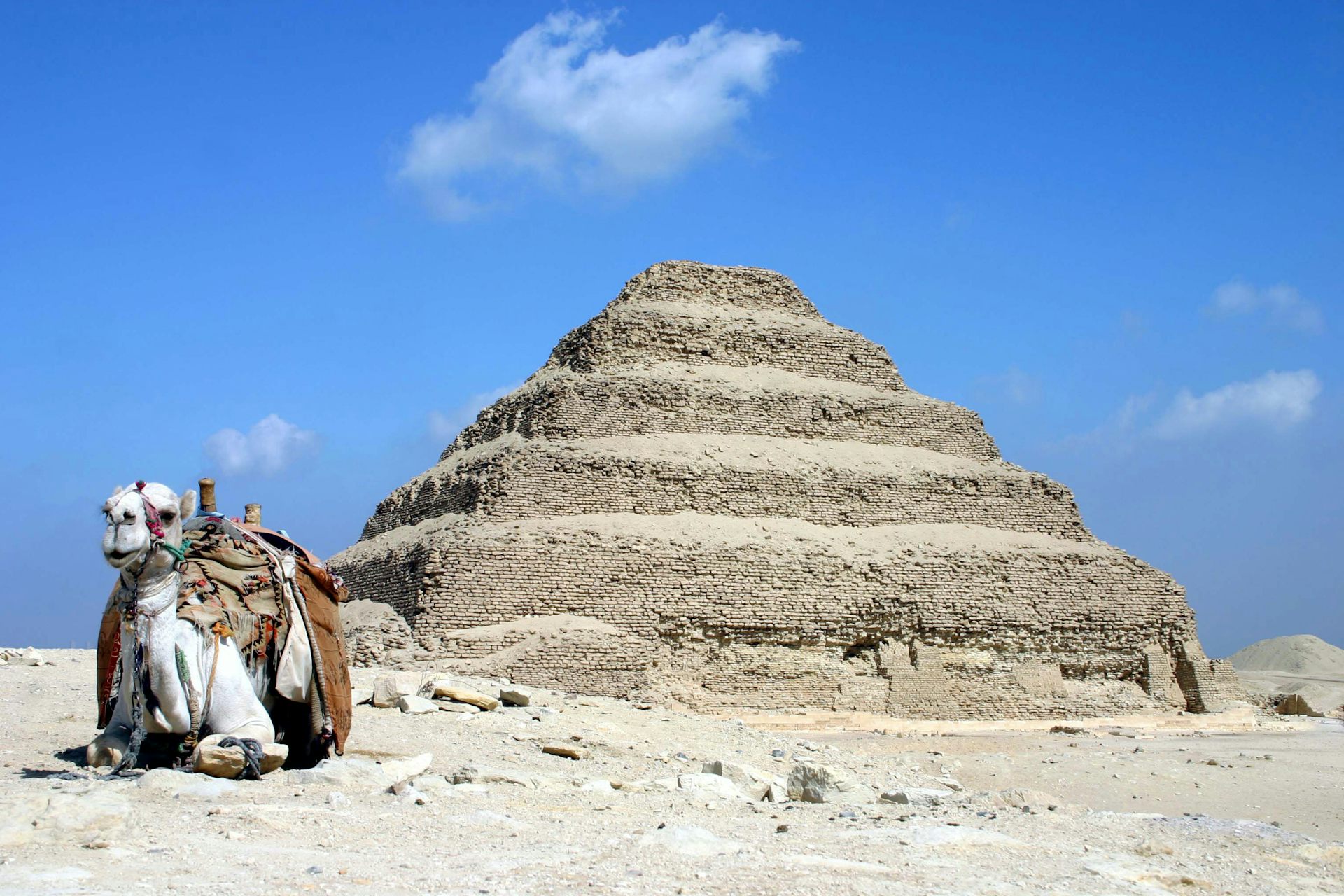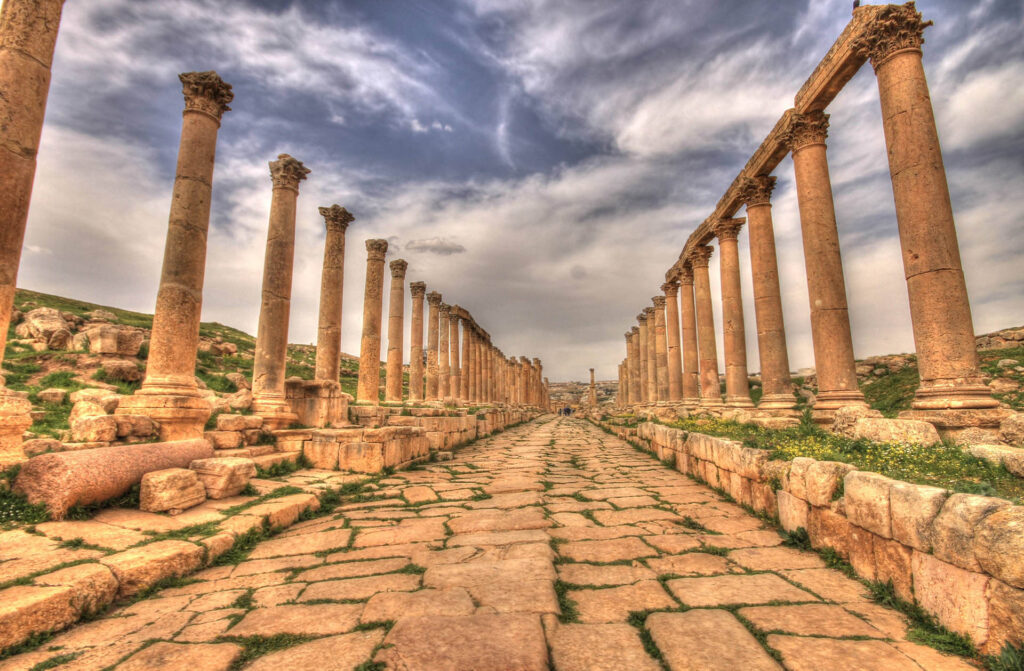Introducing The Step Pyramid of Djoser
Nestled in the heart of the Saqqara necropolis, a towering monument stands as a testament to the ingenuity and ambition of ancient Egyptian civilization. The Step Pyramid of Djoser, also known as the Pyramid of Djoser, is an architectural wonder that has captivated historians, archaeologists, and visitors for centuries, representing a pivotal milestone in the evolution of pyramid construction and the enduring legacy of the Old Kingdom.

The Step Pyramid of Djoser: Egypt’s Ancient Architectural Marvel
The Reign of King Djoser and the Rise of the Pyramid
King Djoser, also known as Netjerykhet, was the second ruler of the 3rd Dynasty of ancient Egypt, reigning from around 2667 to 2648 BCE. His reign marked a significant period of transition and innovation, not only in the realm of architecture but also in the broader cultural and religious spheres of Egyptian society.
The Shift from Mastaba to Pyramid
Prior to the construction of the Step Pyramid, the traditional burial structures for Egyptian royalty were known as mastabas – flat-roofed, rectangular tombs made of mud brick or stone. However, Djoser’s ambitious vision and the innovative genius of his vizier, Imhotep, paved the way for a monumental shift in funerary architecture.
The Step Pyramid was conceived as a colossal structure that would serve as Djoser’s eternal resting place, surpassing the grandeur and scale of the mastabas that came before it. This audacious undertaking marked the birth of the pyramid form, a design that would become synonymous with the architectural marvels of ancient Egypt.

The Step Pyramid of Djoser: Egypt’s Ancient Architectural Marvel
The Architecture and Construction of the Step Pyramid
The Step Pyramid of Djoser is a remarkable feat of engineering and construction, standing as a towering monument to the skill and ingenuity of the ancient Egyptian builders. At its base, the structure measures an impressive 109 meters (358 feet) by 125 meters (410 feet), rising to a height of 62.5 meters (205 feet) through six successive stepped levels.
The Innovative Design and Construction Techniques
One of the most striking features of the Step Pyramid is its innovative design, which represents a significant departure from the traditional mastaba form.
The pyramid’s stepped levels were constructed using a series of mastabas, each smaller than the one below, creating the distinctive stepped appearance that gives the monument its name.
The construction techniques employed by the ancient builders were equally remarkable.
The pyramid was built using a combination of locally quarried limestone and finely crafted limestone casing stones, which were meticulously carved and fitted together with incredible precision.
To ensure the stability and durability of the structure, the builders incorporated a complex system of internal chambers, corridors, and shafts, designed to relieve the immense weight and pressure exerted by the pyramid’s massive size.

The Step Pyramid of Djoser: Egypt’s Ancient Architectural Marvel
The Surrounding Complex and the Legacy of Imhotep
The Step Pyramid of Djoser is not an isolated monument but rather the centerpiece of a vast funerary complex that encompasses a series of courtyards, temples, and subsidiary structures. This complex, known as the Djoser Pyramid Complex, is a testament to the architectural and cultural achievements of the Old Kingdom and the enduring legacy of its visionary architect, Imhotep.
Imhotep: The Legendary Architect and Polymath
Imhotep, the brilliant mind behind the Step Pyramid’s design, was a multitalented individual who transcended his role as a mere architect. He was a true polymath, excelling in various fields including medicine, astronomy, and engineering, earning him a revered status in ancient Egyptian society.
Imhotep’s innovative approach to architecture and his mastery of construction techniques revolutionized the way pyramids were built, paving the way for the iconic smooth-sided pyramids that would follow in later dynasties. His lasting impact on Egyptian culture was so profound that he was later deified and worshipped as the god of medicine and healing.
The Surrounding Complex and Its Significance
The Djoser Pyramid Complex is a vast and intricate site that encompasses far more than just the Step Pyramid itself. The complex features a series of courtyards,
subsidiary pyramids, and temples, all meticulously constructed and adorned with intricate reliefs and inscriptions.
One of the most notable structures within the complex is the Heb-Sed Court,
a vast courtyard believed to have been used for the celebration of the Heb-Sed festival, a ritual renewal of the pharaoh’s power and legitimacy. The complex also includes the South Tomb, a subterranean burial chamber that may have served as Djoser’s original tomb before the construction of the Step Pyramid.
The sheer scale and complexity of the Djoser Pyramid Complex underscore the immense resources and labor that were dedicated to its construction,
reflecting the power, wealth, and ambition of the Old Kingdom pharaohs.

The Step Pyramid’s Legacy and Significance
The Step Pyramid of Djoser stands as a monumental achievement not only in terms of its architectural grandeur but also in its symbolic and cultural significance within the annals of ancient Egyptian civilization.
Influencing the Evolution of Pyramid Construction
The Step Pyramid’s innovative design and construction techniques had a profound impact on the evolution of pyramid building in ancient Egypt. Its stepped form served as a precursor to the iconic smooth-sided pyramids that would later be constructed during the Old and Middle Kingdoms, such as the Great Pyramids of Giza.
The lessons learned from the construction of the Step Pyramid, including the use of internal chambers and the incorporation of structural reinforcements, paved the way for the development of increasingly complex and ambitious pyramid designs.
A Symbol of Power, Wealth, and Immortality
Beyond its architectural significance, the Step Pyramid of Djoser also served as a powerful symbol of the pharaoh’s divine authority, wealth, and the belief in eternal life. The immense resources and labor required for its construction were a testament to the pharaoh’s ability to command and mobilize the resources of the entire kingdom.
Moreover, the pyramid’s funerary purpose reflected the ancient Egyptian belief in the afterlife and the importance of providing a grand and enduring resting place for the pharaoh’s spirit. This belief would continue to shape the architectural and cultural traditions of ancient Egypt for centuries to come.

Preserving a Timeless Wonder
Today, the Step Pyramid of Djoser stands as a cherished archaeological site and a UNESCO World Heritage Site, drawing visitors from around the globe to marvel at its grandeur and explore its rich history.
Ongoing Conservation and Restoration Efforts
Over the centuries, the Step Pyramid has endured the ravages of time, weather, and human intervention. However, ongoing conservation and restoration efforts have been undertaken to preserve this remarkable monument for future generations.
Archaeologists, conservators, and international organizations have collaborated to stabilize the structure, repair damaged areas, and protect the intricate reliefs and inscriptions that adorn the surrounding complex. These efforts not only safeguard the physical integrity of the monument but also ensure that its cultural and historical significance is preserved for centuries to come.
A Living Museum and Educational Resource
Beyond its physical preservation, the Step Pyramid of Djoser serves as a living museum and an invaluable educational resource. Visitors can explore the vast complex,
guided by knowledgeable Egyptologists, and gain insights into the lives, beliefs, and achievements of the ancient Egyptian civilization.
Educational programs, interactive exhibits, and immersive experiences offer visitors a deeper understanding of the Step Pyramid’s construction,
its architectural innovations, and its place within the broader context of ancient Egyptian history and culture.
As you stand in the shadow of this towering monument, you can’t help but be awestruck by the incredible ingenuity and determination of the ancient Egyptian builders.
The Step Pyramid of Djoser serves as a powerful reminder of humanity’s enduring quest for greatness, our ability to push the boundaries of architectural achievement, and our insatiable desire to leave an indelible mark on the world for generations to come.










